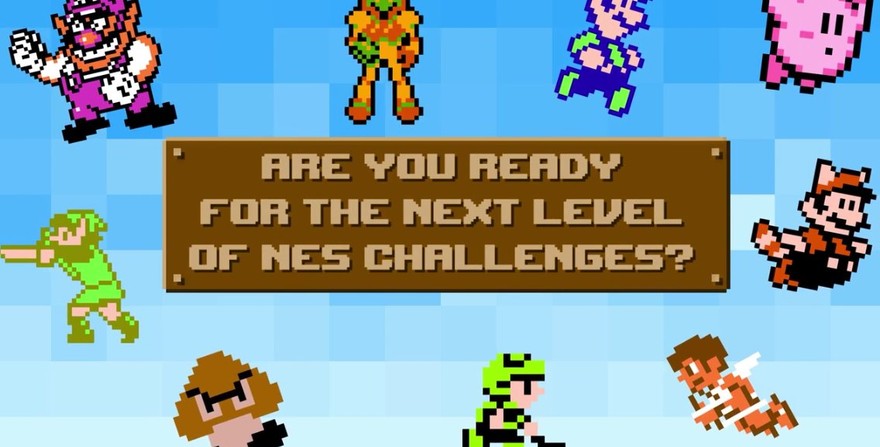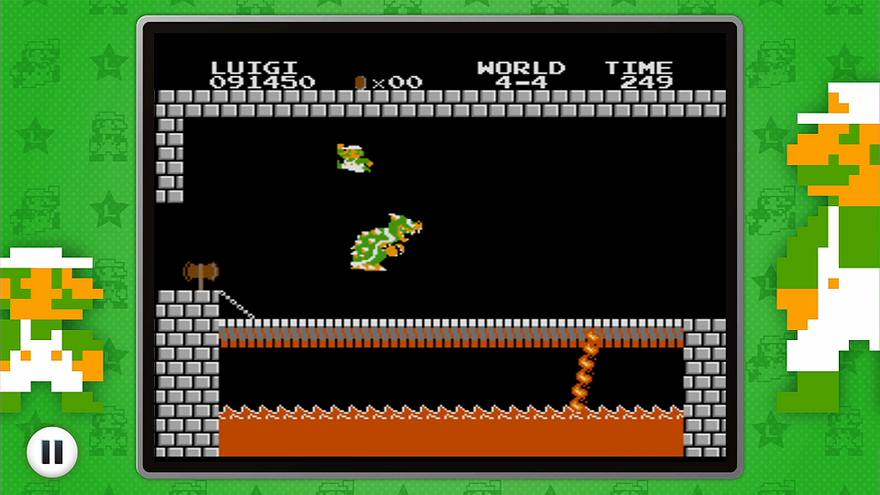You already know what a remix is: It’s a new beat and an old song. It’s Schaeffer’s grandchildren and Duchamp’s cousins. It’s Autotune the News. It’s Naked Lunch and Pride and Prejudice and Zombies. It’s reappropriation. It’s context. It’s a mashup. Lawrence Lessig wrote a book about it. In short: “Everything is a remix.”
With the original NES Remix, Nintendo joined the collagist fray. Drawing on WarioWare, Girl Talk, and “three stars” mobile design, developer indieszero gussied up some of the big N’s beloved early work and hacked them into tiny bits that are easier to digest than Mini Oreos and just as healthy. You could call NES Remix videogames’ Vine. It’s an encouraging response to ADHD, a cultural bridge extended by the attention-haves to the have-nots.

NES Remix 2 is more of the same, but with even better-known source material than its predecessor. But here’s the the problem: Remixes are at their best when they take something known and make it unfamiliar. They unearth an aspect of the work that was dormant in its unremixed form. Good remixes emphasize something latent in their source material. They make new arguments or reframe old ones. NES Remix 2 doesn’t defamiliarize as much as it segments. Calling it a “remix” capitalizes on the cachet of the word in a culture defined as much by the producer as the performer, but it’s a misnomer. Playing twenty songs for ten seconds each isn’t a remix; it’s indecision.
The game assumes that this might be your first exposure to these games in particular, maybe even to the old guard of gaming in general. So, most of the early rounds focus on teaching you mechanics and rules, acclimatizing you to the fact that repeated failures are a metonym for old-school gaming. These early stages are more like overly encouraging tutorials than anything else, a “Keep going!” incentive that unlocks five meaningless curios in exchange for successfully stomping one Goomba. It feels a bit infantilizing. Then again, if you’ve never played Super Mario Bros. 2 before, you’d be forgiven for not understanding that you can weaponize vegetables.
Most of NES Remix 2 is about overcoming immediately comprehensible, increasingly difficult challenges. Beat the boss without getting hit, kill an enemy with an onion, collect 10 coins in 5 seconds, shoot that zeb off the ceiling. They generally take less than a minute, some much less. All of these challenges leverage an existing mechanic from their source game, but sprinkle in difference here and there to keep it fresh. Maybe the level is silhouetted black-on-white now. Maybe you’re controlling three Marios who walk in lockstep with one another. Maybe it’s a little easier to get a star punch on Piston Honda. Maybe Wario’s Woods was really just that weird to begin with.
This isn’t to say that NES Remix 2 is all about repackaging great games in bite-size ruleset wrappers. Some levels serve up a bit of franchise crossover, such as when Samus collects coins in a Mario level. Occasionally these sprite changes add something to the original level, as in the Kirby boss battle that includes Boos in NES Remix 2, changing how you beat up on Whispy Woods. But the majority of the time NES Remix 2 walks the line between product placement and design by find-and-replace. The best example of this is certainly Super Luigi Bros., NES Remix 2’s major differentiator from its predecessor. Super Luigi Bros. stars the meeker Mario Brother and is a carbon copy of the original Super Mario Bros. with one important difference: It’s flipped. Instead of the familiar work of moving left to right, Luigi runs right to left. This is unsettling at first. Your instincts get scrambled. You suck. But then, by 1-2 or 1-3, it clicks, and you’re just playing Super Mario Bros. in the mirror. In a way, Super Luigi Bros. is the equivalent of playing a song backward and calling it a remix.

The way I see it, making contact with these games is really what the NES Remix series is about. You’re getting sample-size portions in the hope that, if you’re new to them, you may grow to love them, or that (if you’re familiar) you’ll remember what it used to taste like. At the same time, NES Remix gives you enough experience to say, “Oh yeah, I played Dr. Mario,” and have a little conversation about everyone’s favorite pill-flipping, virus-killing, Tetris-alike, or any of the other eleven games included. My problem isn’t NES Remix’s lack of focus—it’s that a Whitman’s sampler of great games doesn’t really constitute a remix.
Mashup artists and other remixers often work on the assumption that you’ll recognize at least one of the elements they’re working with. Working with one known piece allows for that sense of rightness where you least expect it: When a nasty Ying Yang twins verse actually fits in with The Verve’s “Bittersweet Symphony,” it hits you with 50ccs of cognitive dissonance. But mashups and remixes aren’t dismissive of compositional theory. Most don’t throw together two mismatched pieces for the sake of dissonance; they just use conflicting flavors to make something that’s unlike any of its constituent parts. Whether through small tweaks or brute force, remixers fit square pegs in round holes.
As a form, remixes make a statement by contrasting their original context with a new one created through juxtaposition, rearrangement, and elision. A politicized version of this idea chops up President Obama’s 2011 State of the Union into a series of surreal policy recommendations. Remixes can be irreverent or sacrosanct, but more than anything else they must disrupt their original context. NES Remix 2 fails this test. It’s not a new way of experiencing old ideas; it’s a highlight reel. If NES Remix were a DJ, it wouldn’t be Danger Mouse tearing up The Grey Album—it would be that guy in your dorm who insisted on DJing at college parties but couldn’t bear to play a single song all the way through.
